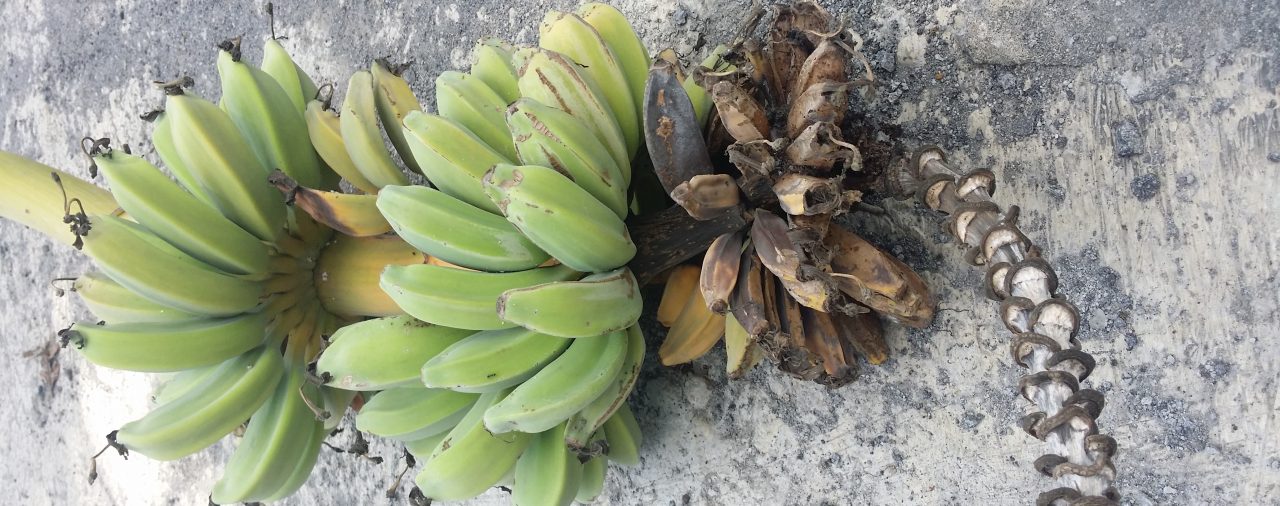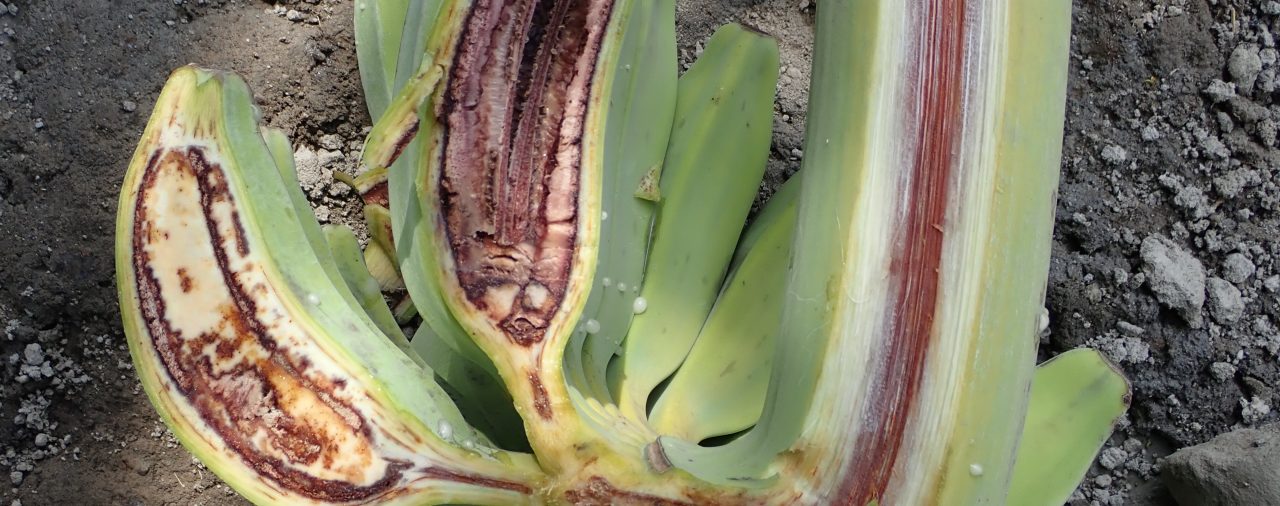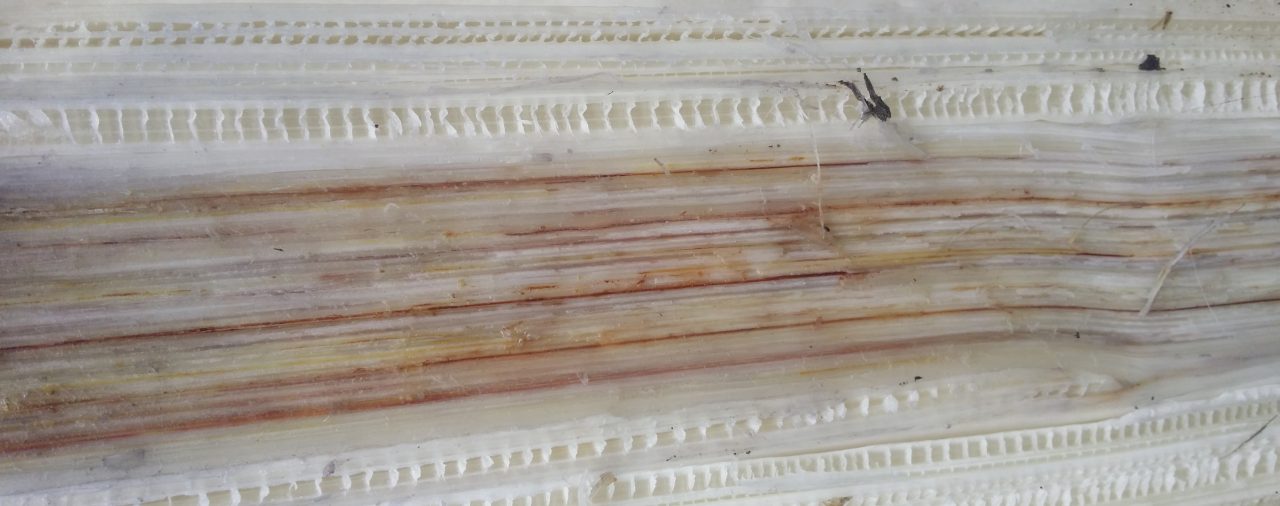
A new, regular feature in Australian Bananas magazine, Under the Microscope will profile the industry’s emerging and exotic diseases.
Sometimes you just need the facts, fast.
WHAT IS BLOOD DISEASE?
Banana Blood Disease is caused by a bacterium called Ralstonia syzygii subsp. celebesenis which belongs to a group of pathogens that cause bacterial wilts in banana. It is related to Moko disease.
WHAT ARE THE SYMPTOMS?
- Young leaves turn bright yellow, then necrotic.
- Older leaves turn yellow, collapse and die.
- Shrivelling of the male flower bud and lower hands on the bunch (Fig 1).
- Fruit tissue shows internal reddish discolouration, when cut (Fig 2).
- Vascular tissue of the peduncle show reddish brown discolouration when cut (Fig 3).
- Internal discolouration of the pseudostem (Fig 4).
HOW DOES IT SPREAD?
The Blood disease bacterium can be spread in infected plant material, fruit, soil, water, insects, and pollinators.
The pathogen can survive in the soil for more than a year.
WHERE IN THE WORLD IS IT FOUND?
Blood disease is currently found parts of Indonesia and in peninsular Malaysia. Australia is free of the banana blood disease.
WHAT ARE WE DOING TO PROTECT OUR INDUSTRY?
- Strict regulation concerning import of plant material.
- Development of diagnostics and surveillance.
- Increase awareness among industry stakeholders.
WHAT CAN I DO TO PROTECT MY FARM?
- Use only disease-free planting material.
- Check your farm frequently for new pests and unusual symptoms.
- Maintain good biosecurity practices.
Photos and text provided by Prof André Drenth, University of Queensland as part of project BA16005 Strengthening the banana industry diagnostic capacity.




